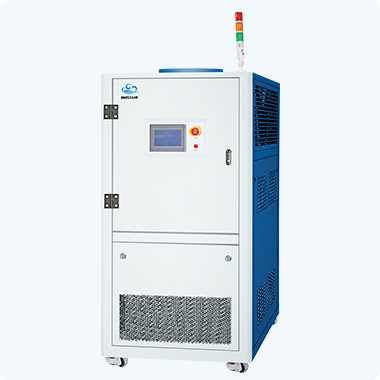The working principle of energy storage battery cluster liquid cooling test machine is explained in detail
In today's energy storage field, energy storage battery clusters play a crucial role. In order to ensure the stable performance of these battery clusters under high load and continuous operation, the liquid-cooled test machine has become an indispensable test equipment. The purpose of this article is to introduce the working principle of the battery cluster liquid cooling test machine and its importance in practical applications to the engineers, technicians and readers interested in battery performance testing in the energy storage industry.
The storage battery cluster liquid cooling test machine is mainly used for battery manufacturers, research institutions and energy storage project sites to detect and evaluate the cooling performance of the battery cluster. By simulating the liquid cooling conditions in a real operating environment, the tester can help users understand the temperature distribution of the battery cluster under different cooling conditions, heat dissipation efficiency, and potential thermal runaway risk.
Liquid cooling testing machine mainly has the following functions:
1, accurate temperature control: The advanced temperature control system built into the test machine can accurately simulate various temperature environments that the battery cluster may encounter in actual work.
2, flow regulation: By adjusting the circulation flow of the coolant, the test machine can simulate different cooling conditions, so as to comprehensively evaluate the heat dissipation performance of the battery cluster.
3, data acquisition and analysis: the test machine collects key data such as temperature, voltage and current of the battery cluster in real time, and analyzes it through professional software to generate detailed test reports.
A detailed explanation of the working principle
The working principle of the battery cluster liquid cooling test machine can be divided into three main steps:
1. Coolant circulation: The test machine circulates the coolant to the coolant channel of the battery cluster through the built-in pump. The circulating speed and flow rate of the coolant can be precisely adjusted by the control system of the test machine.
2, temperature simulation and control: the temperature control system of the test machine heats or cools the coolant according to the preset test parameters to simulate the temperature change of the battery cluster in actual work. At the same time, the temperature control system also ensures that the coolant maintains a constant temperature during the cycle, thus ensuring the accuracy of the test results.
3, data monitoring and analysis: During the test, the test machine monitors the temperature change of the battery in real time through the temperature sensor arranged on the battery cluster. These data are transmitted in real time to the data analysis system of the test machine, where they are recorded and analyzed along with other key parameters such as voltage and current. By analyzing this data, engineers can evaluate the performance of the battery cluster under different cooling conditions and optimize the design of the cooling system accordingly.

Second, the example intuitive description
Take a test scenario as an example: Assume that an energy storage battery cluster needs to work at an ambient temperature of -10 ° C to +50 ° C and has good heat dissipation performance under maximum load. When testing with a liquid cooled test machine, engineers can set the temperature control system of the test machine to cycle within this temperature range, while adjusting the flow of coolant to simulate different cooling conditions. Throughout the test, the tester recorded temperature changes and other critical data of the battery cluster in real time. After the test is completed, engineers can analyze these data to determine the performance of the battery cluster under different temperature and cooling conditions, so as to provide strong data support for practical applications.
Iii. Conclusion
The storage battery cluster liquid cooling test machine provides a powerful test tool for engineers and technicians in the energy storage industry by simulating the liquid cooling conditions in the real working environment. Its precise temperature control, flow regulation, and data acquisition and analysis make the evaluation of the cooling performance of the battery cluster more comprehensive and accurate. In the future development of the energy storage field, the liquid-cooled test machine will continue to play an indispensable role.
Energy storage liquid cooling temperature control technology application advantages
How to derive the test results of high and low temperature coolant tester
High and low temperature coolant test electrical source circuit connection method
The problem of water source during the use of high and low temperature coolant testing machine
Coolant filling and discharging method of battery module high and low temperature liquid cooling test machine
High and low temperature liquid cooling test machine solutions
